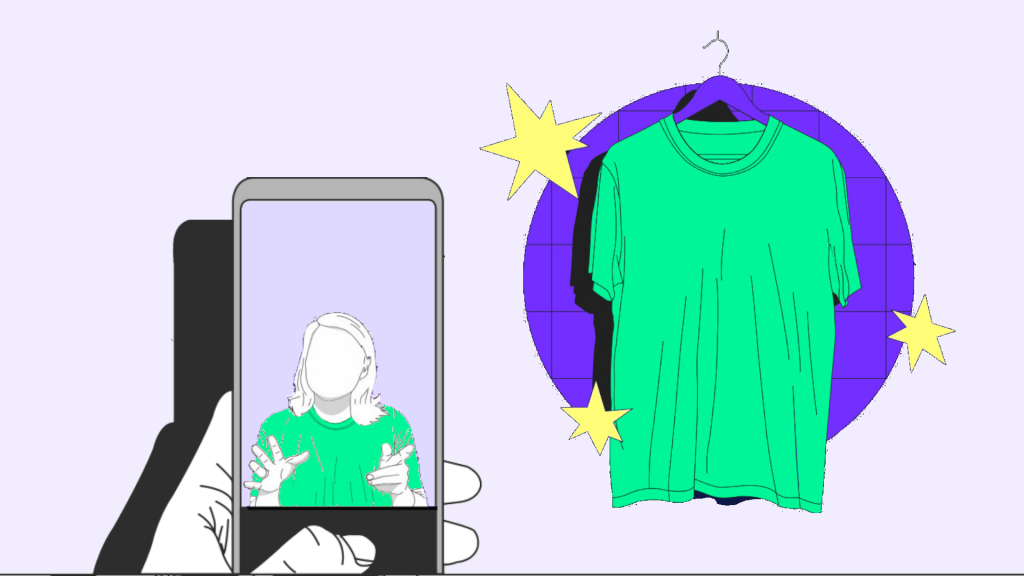Gone are the days when online fashion retailers struggled to replicate the immersive experience of trying on clothes in physical boutiques. The fashion industry has entered a new era of virtual fashion thanks to rapid advancements in try-on technology. This revolution transforms how consumers buy apparel and accessories online, offering them an interactive and personalized try-on experience from the comfort of their homes. Augmented reality (AR), virtual reality (VR), and computer vision have combined forces to create a virtual world where fashion boutiques can now provide customers an unparalleled try-on experience.
In this article, we will explore the exciting opportunities presented by virtual try-on fashion websites and delve into the role of a .CFD domain name in establishing a powerful online presence. Additionally, we will examine the various try-on technologies reshaping the fashion business and highlight their availability and market presence. Lastly, we will guide you through the process of transforming your fashion website into an alluring online store that offers visitors an immersive and captivating try-on experience.
Try-on virtual fitting technologies transforming the fashion industry
Try-on technology has completely changed how consumers buy clothing online by enabling them to try on clothing and accessories virtually. These innovations allow a realistic and dynamic try-on experience by combining computer vision and virtual and augmented reality (AR).
1. Augmented Reality (AR) in Fashion: Bringing Virtual Clothes to Life
Augmented reality, or AR, superimposes virtual features on the physical world. Users can view virtual clothing items superimposed on their bodies using augmented reality (AR) try-on technologies, giving them a visual idea of how the apparel will look and fit. This technology provides consumers a realistic and personalized try-on experience by considering body dimensions, fabric drapes, and movement.
Mirrors with Augmented Reality
A few fashion shops have integrated mirrors with augmented reality into their physical storefronts. Customers can see how various outfits might look on them in real-time by using these mirrors, which use AR technology to overlay virtual clothing items onto the customer’s reflection.
application d’essayage virtuel
The “smart mirror” is adapting to smartphones, and brands like Nike or are experimenting with many interesting things: the possibility of having the model of one’s choice (with a morphology close to our own, ideally) appear in 3D, at home, through the screen of one’s smartphone by scanning a QR code or the possibility of previewing shoes on one’s feet. Nike is not alone in this niche; Gucci, for example, has called on start-up Wanna to offer this experience to their customers.
These features already exist for e-commerce sites thanks to plug-ins in fields such as furnishings and decoration, so it’s only a matter of time before they become effective and accessible for more complex products.
2. Virtual Reality (VR) in Fashion: Creating Immersive Virtual Showrooms
Inspired by virtual galleries that allow visitors to wander among works of art, these showrooms use virtual reality headsets to reproduce the experience of a visit to a perfectly-stocked boutique.
The store in 3D
A few brands have tried their hand at this (Balenciaga, for example, which presents its products using video game codes), and the major players in the Metaverse don’t envisage a virtual universe without a clothing boutique.
3D Body Scanning
The next step is to integrate into this virtual world an avatar whose characteristics are similar to our own in real life, so that we can indirectly try on the items placed on these virtual shelves. German retailer Zalando has taken the first step with the Zalando Fitting Room, which allows users to try on jeans, for example, using an avatar created by entering the user’s measurements, skin color, hairstyle and face. In addition to the visualization capability, this data can enable manufacturers to adjust certain models to better match the market. But it’s not hard to imagine the difficulties in terms of respect for personal data that such a device would entail.
These technologies are becoming increasingly accessible, and will no longer be the preserve of the big names in fashion. If you have an e-commerce site in this field, you could consider transforming it into a real virtual boutique, far more exciting than a simple catalog of references. Keep an eye on the plug-ins for the “Try On” theme to see the possibilities.
The Tools You Need to Turn Your Site into a Real Boutique Around the Try-On Experience
The consumer experience must be improved, and a strong online presence must be built to make a successful virtual try-on fashion website. Here are five things to think about:
1. A .CFD Domain Name for a Distinctive Identity
When it comes to establishing a strong online presence, selecting the right domain extension is crucial. That’s why it’s important to choose a domain extension that sets your website apart from generic e-commerce platforms and clearly communicates its purpose. A .CFD domain is the perfect choice for your virtual boutique. It not only distinguishes your website but also emphasizes your fashion expertise and unique try-on experience. By opting for a .CFD domain, you give your online store a sense of legitimacy and position it as a go-to destination for fashion enthusiasts.
2. A Catalogue for a Broad Range of Experiences
Create a broad range of clothing and accessories that can accommodate different tastes, body types, and fashions. Offering various products allows clients to look through many possibilities and discover items that complement their styles. Add clothing from several brands and designers to provide a varied choice.
3. A Marketing Plan That Emphasises the Trying-On Experience
Create a thorough marketing plan highlighting the special value of your virtual boutique’s try-on experience. Stress the ease, precision, and enjoyment of trying on items online. Use social media networks to reach your target demographic, team up with fashion industry influencers, and run targeted advertising. You can raise brand awareness and increase traffic to your online boutique by making noise about your website and the outstanding try-on experience it provides.
4. Seamless User Interface and Experience
Ensure your website’s user interface is simple and easy to use. Create a seamless and engaging try-on experience so that customers can easily choose and see apparel on virtual models or their own submitted photographs. Improve the website’s functionality and loading time to offer a seamless and pleasurable browsing experience.
5. Customer Feedback and Participation
Include elements that promote customer interaction and feedback. Include features for users to score the try-on experience, provide feedback, and post pictures of their virtual attire on social media. Engage in active listening to customer input and act on their advice. Creating a community around your online store encourages patron loyalty and word-of-mouth advertising.
Conclusion: Embracing Try-On Technology: Redefining the Future of Online Fashion Retail
In conclusion, the advent of try-on technology has significantly transformed the landscape of online clothing sales, overcoming the historical challenges associated with this industry. By harnessing these cutting-edge tools and incorporating them into your online clothing store, you have the opportunity to create a captivating and immersive experience for your customers. With virtual try-on technologies, individuals can effortlessly and accurately visualize how clothes will fit their bodies, enabling them to express their unique style preferences.
By leveraging try-on technology, you can establish a formidable online presence that attracts fashion enthusiasts and sets your virtual boutique apart from competitors. Key elements for success include curating a diverse and extensive catalogue, implementing a strategic marketing strategy, and adopting a distinctive domain extension like .CFD, ensuring a seamless user experience and actively involving customers in shopping. These elements work together to offer your consumers a truly personalized and unparalleled shopping experience from the comfort of their homes.





